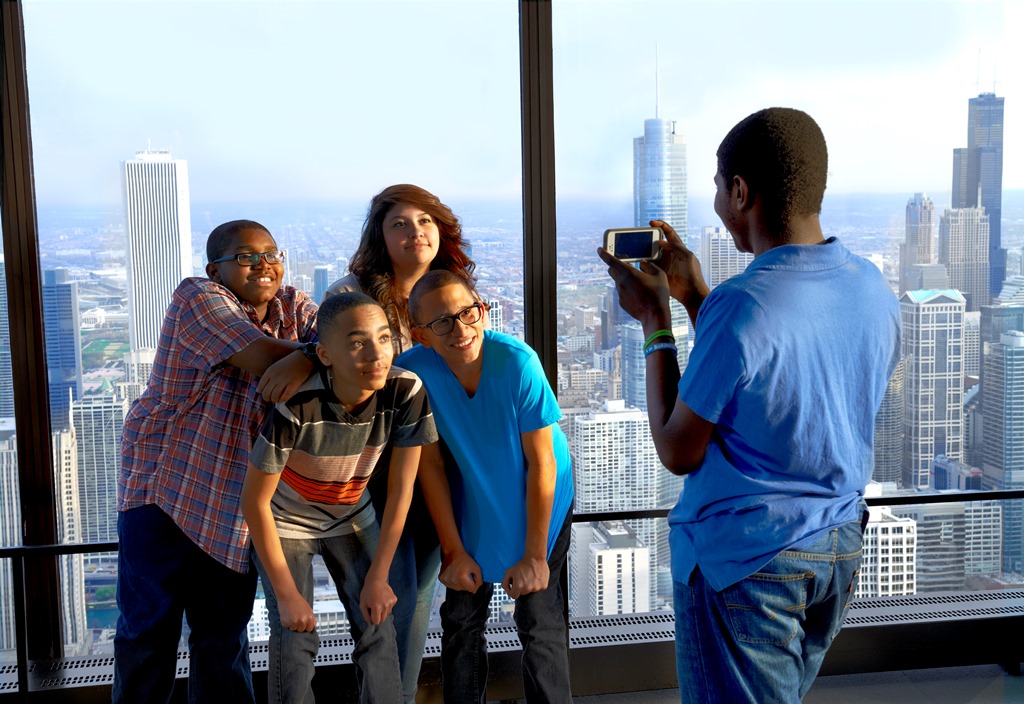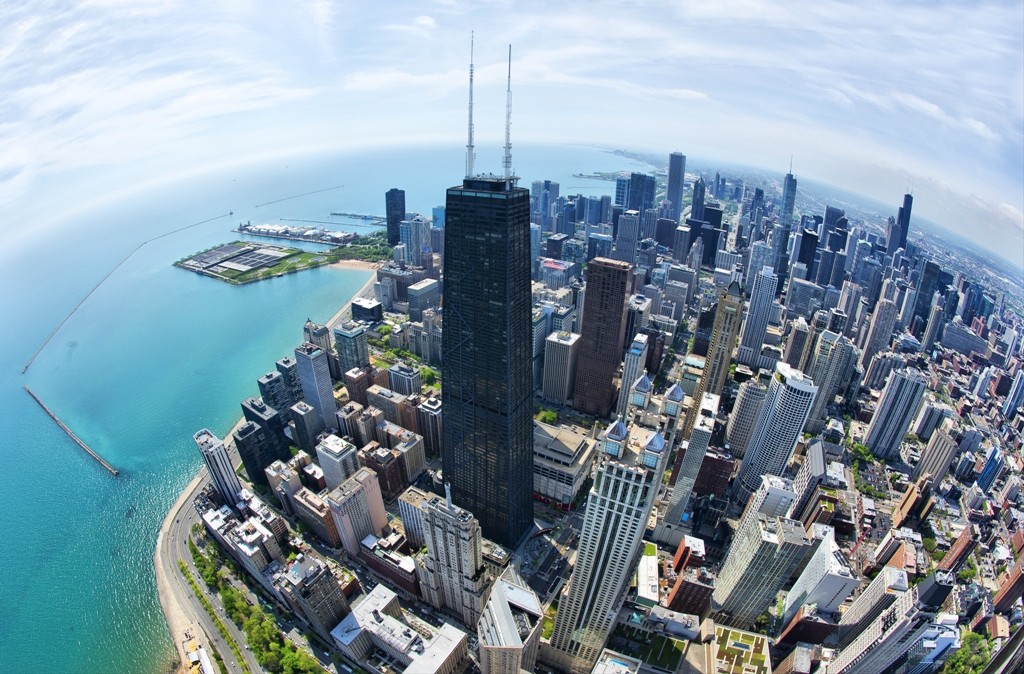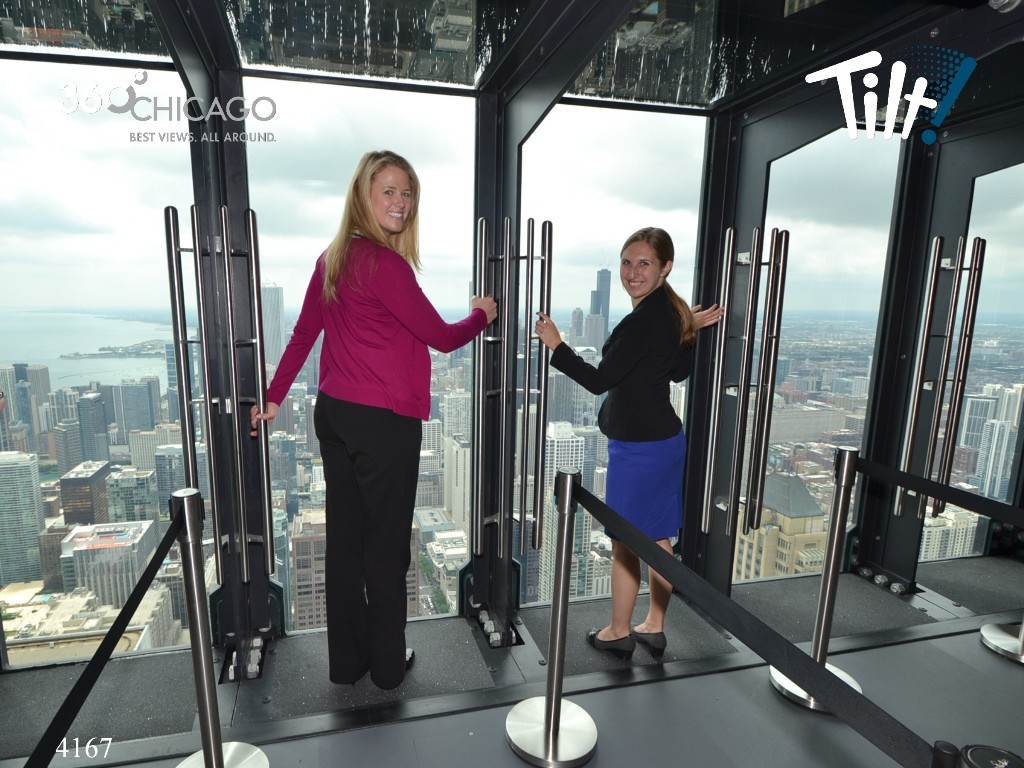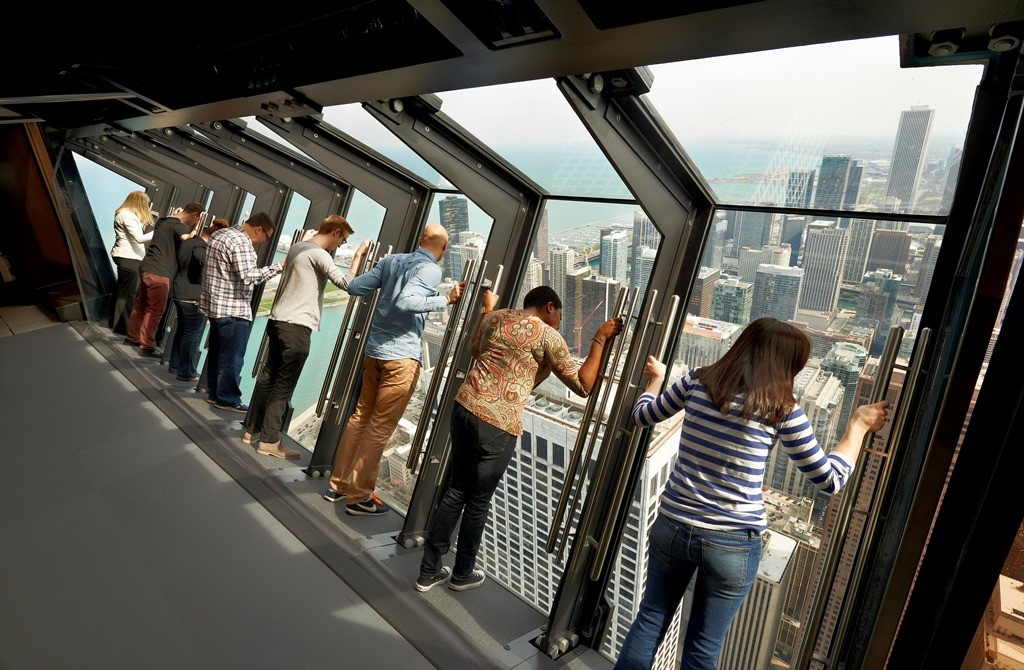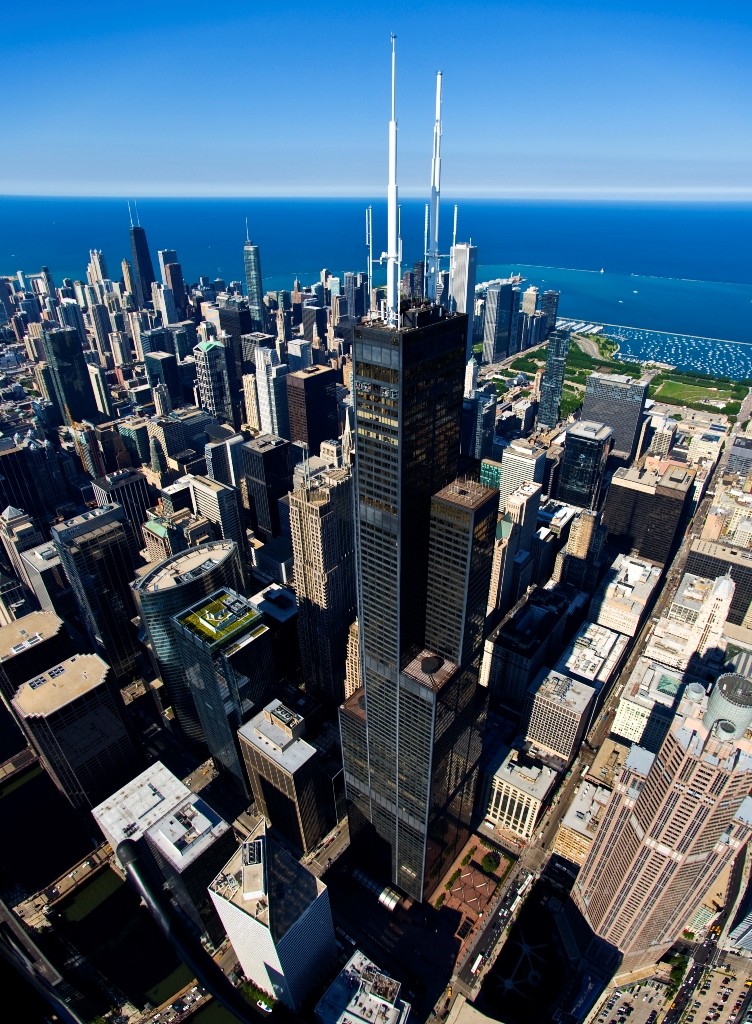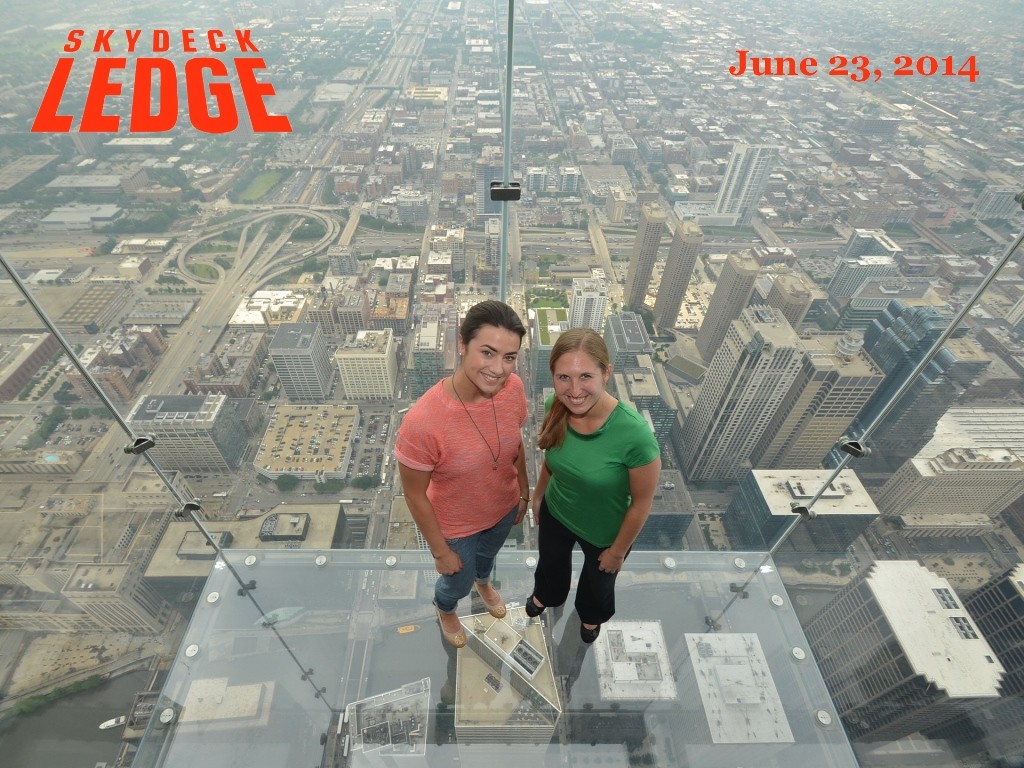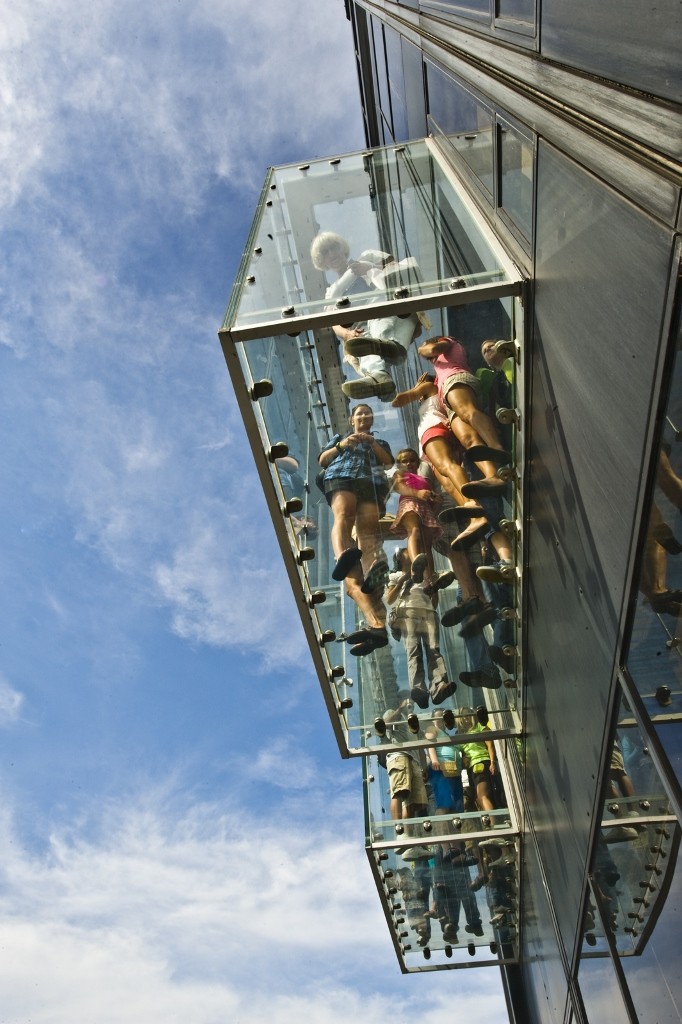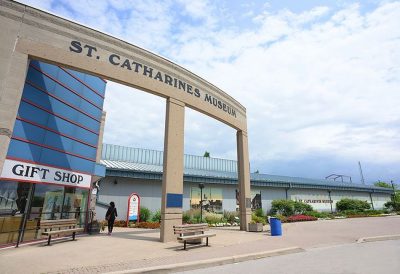I had the opportunity to rise to the top of two of Chicago’s tallest towers (say that five times fast), and what an experience I had. As I rested my forehead against the glass walls in true Ferris Bueller’s Day Off fashion, many thoughts rushed through my brain: “How is a building of this magnitude built? Why do I trust this glass not to cave out on me? What is that building over there? Wow, Chicago is huge.” From my 1,000-feet-plus perches, I was able to learn so much about the city, its history and the answers to all my questions.
Viewing Chicago from atop Willis Tower and John Hancock Center puts the cherry on top of any Chicago-based trip. Start off your day overlooking the city—pointing out sights your students will be visiting that day—or end your day gazing over the city lights—recapping everything you saw.
360◦ Chicago at John Hancock Center
360◦ Chicago, formerly known as the John Hancock Observatory, takes you up the fastest elevator in North America to the 94th floor of the John Hancock Center.
In the viewing area 1,000 feet above the city floor, your students can learn from various themed touch screens, such as famous people and city landmarks. On the city landmarks touch screen, you’ll see an overhead map view of downtown. Want to learn more about that funny-shaped building by the pier? Touch it and an information box will pop up. On another touch screen, you see Paris, Berlin and Avion, France from a live camera. This is a great way to learn about time zones; while it may be sunny day in Chicago, there could be a black starry sky in Paris. Language students can test their knowledge at any of the touch screens, as each implements seven different languages: English, Mandarin Chinese, German, French, Spanish, Japanese and Brazilian Portuguese.
Your students can “experience higher education” at 360◦ Chicago’s Sky School. This program offers four separate modules for pre-k, grade school, middle school and high school, covering history, architecture, social studies, sciences, math, art and geography. Students love the fun facts, trivia and hands-on activities.
TILT opened on May 9 and is an enclosed glass-and-steel movable platform that slowly tilts forward 30 degrees. It may not sound like much, but trust me when I say it feels like 45 degrees. TILT can hold up to 50 within a half hour, so larger student groups won’t have to wait long for their chance to hang 1,000 feet over The Magnificent Mile.
Audio tours and souvenir photos are discounted for groups, and there is a souvenir shop on the 94th floor. Continental breakfast and boxed lunches are available with advance reservations. The most popular months to visit are March, April and May.
Skydeck Chicago at Willis Tower
Skydeck Chicago is on the 103rd floor of Willis Tower, formerly known as Sears Tower, 1,353 feet in the air.
En route to the elevators (which take just one minute to transport 30 people to the top) your students will wind through halls, which is an experience in itself. With kiosks, photo ops and historic timelines around every corner, I found myself on a journey through a colorful and interactive exhibit all about Chicago and the Skydeck experience. Your students can even find out how many “yous” it would take to measure up to the height of Willis Tower. “Reaching for the Sky,” a nine-minute video your students can sit back and watch in the theater, tells the story of Chicago’s rise to the top of the architectural world. Learn how the Willis Tower went from a dream to a world icon.
Teachers receive a comprehensive, 37-page activity book, “The Hows, Whats and Wows of Willis Tower – A Guide For Teachers.” It’s packed with facts, history and fun activities to occupy inquisitive student brains.
Ledge, open to the public since 2009, features glass boxes that extend 4.3 feet from the Skydeck. The Ledge expands past the buildings’ walls to give you the feeling of floating 1,353 feet above the city in a transparent glass case.
You can arrange to have your school group’s name displayed on the queue when you arrive at Skydeck. There are discounted prices on pictures and photo packages. When making reservations, you have the option of adding lunch to your schedule. Skydeck’s new lunchroom features seating for 100 people and students can eat before or after the Skydeck visit. The most popular visiting months are March and April.
Both skyscrapers are among the nation’s tallest buildings, and there is much to learn from these silent giants. Visit Skydeck Chicago or 360 Chicago to learn more about student group opportunities and how these two Chicago towers will set the stage for a memorable trip.

